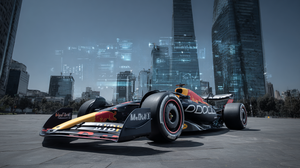Who Ruled in Texas?
This newsletter dives into the Austin Grand Prix and the fight for supremacy at the Circuit of the Americas – where Hamilton’s history and Verstappen’s momentum once again collided under the Texas sun.
At a Glance
- Setting the Stage
- The Rivalry for the Crown
- The Battle for Texas
- The Challengers
- The Race Recap
- The State of the Grid
- Looking Ahead: Mexico City
Setting the Stage
Austin – the heart of Texas and home to one of the most dynamic circuits on the F1 calendar – delivered another unforgettable weekend of racing. The Circuit of the Americas (COTA) stretches 5.513 km, featuring 20 turns inspired by some of the most iconic corners in the world, from Silverstone’s fast sweeps to Istanbul’s tight technicals. With its 133-foot climb into Turn 1, the track demands precision, power, and nerve.
As the Road to Abu Dhabi continues, COTA once again proved more than just another stop – it was a stage where legacies collided.
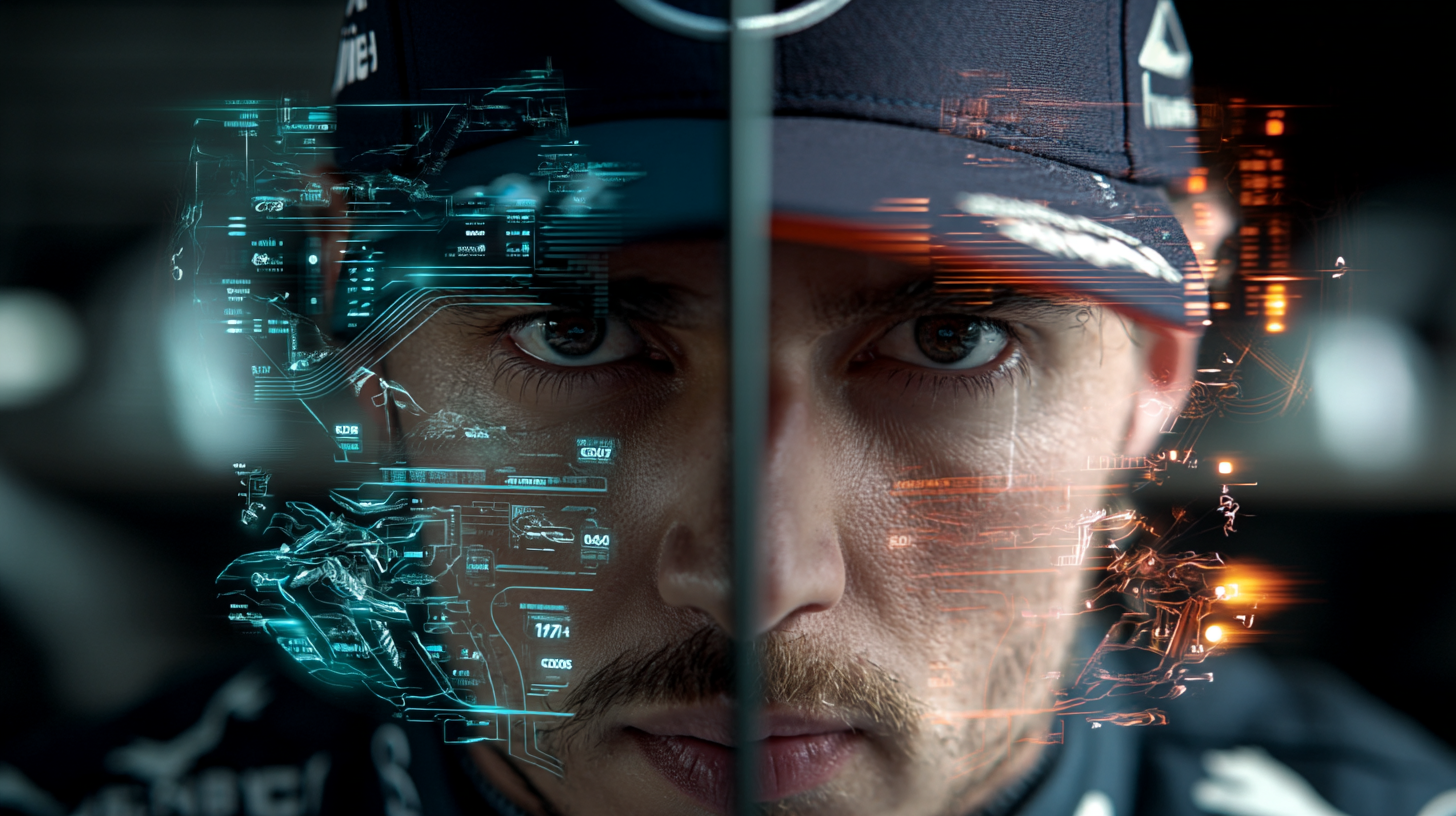
The Rivalry for the Crown
Few tracks carry a rivalry quite like Austin’s. Lewis Hamilton built his legacy here, securing five wins (2012, 2014, 2015, 2016, 2017) and clinching a world title on this very circuit. But the tides have turned – Max Verstappen has dominated COTA in recent years, taking victories in 2021, 2022, and 2023, asserting himself as the modern ruler of Texas asphalt.
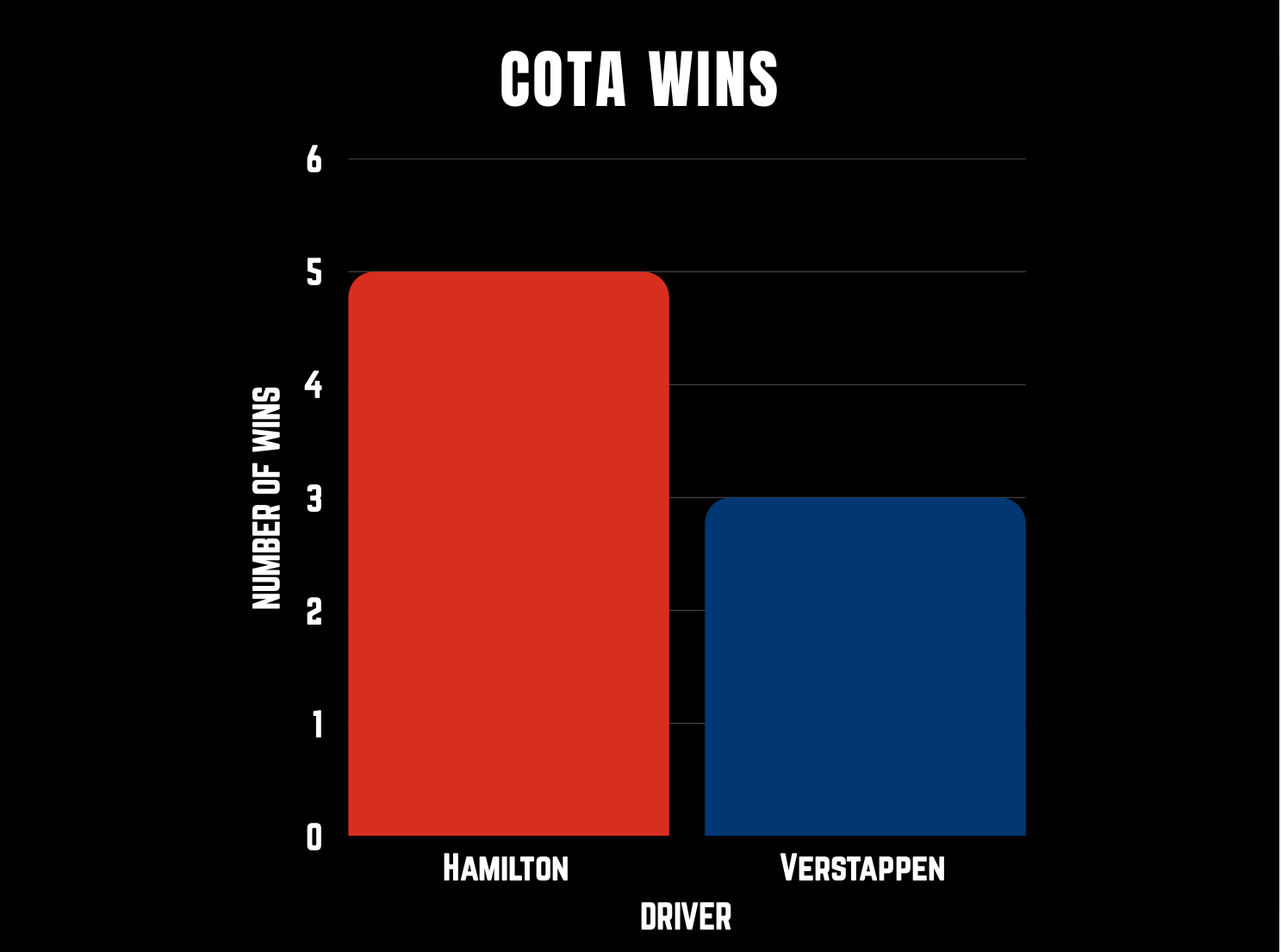
Heading into the 2025 race, both drivers had something to prove – Hamilton chasing resurgence, Verstappen chasing confirmation – setting the stage for another Texas showdown that continued to shape their legacies.
Be sure to also check out our Instagram site for regular updates and posts on our F1 coverage.
The Battle for Texas
Few circuits have defined the careers of both Hamilton and Verstappen quite like Austin’s Circuit of the Americas. Both drivers left their mark – Hamilton through a period of dominance that built his legacy, and Verstappen through a streak of performances that defined his era.
Finishing Positions at COTA
The chart below tracks each driver’s finishing position at COTA since their respective debuts at the circuit. Hamilton’s 5 victories (2012, 2014, 2015, 2016, and 2017) established him as the original “King of COTA.” His performances were defined by precision and consistency, peaking with his 2015 United States Grand Prix win, the same race where he clinched his third World Championship. Verstappen’s results, meanwhile, showed a steady climb, marked by his dominant run in recent years.
Still, a few outliers stand out: in 2016, Verstappen’s race ended early with a mechanical failure; Hamilton was disqualified in 2023 for a technical infringement after finishing third; and in 2024, Hamilton suffered a rare DNF following a suspension failure. These exceptions aside, both consistently performed near the front – reinforcing why COTA has remained a proving ground for F1’s elite.
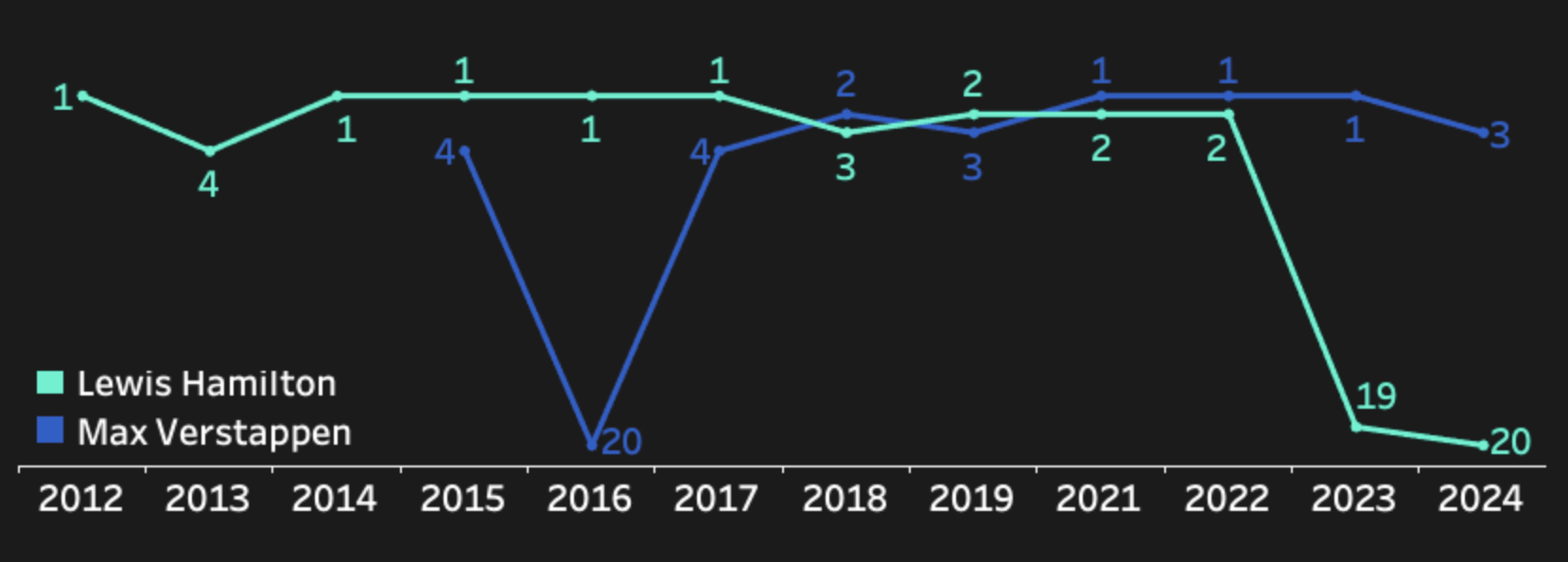
While the race results illustrate how both drivers have excelled, the story deepened when viewed through our Drive Score metric – first introduced in our Singapore coverage – which combined qualifying performance, race finish, and positional changes throughout the Grand Prix into a single, comparative measure of drive quality.
Want to learn how to analyze data and build amazing data stories? Join Data Punk Media today!
Drive Scores at COTA
The second chart below highlighted each driver’s Drive Score at Austin from 2012 through 2024, providing a performance-based lens that went beyond simple results. Hamilton’s scores showcased his early-era dominance between 2012 and 2019 before tapering off as Mercedes’ advantage narrowed, while Verstappen’s trend line rose steadily, reflecting both improved consistency and raw race pace. The average Drive Score chart below underscores that shift: calculated only across the seasons where both drivers raced at COTA (2015–2024), Verstappen led with an average of 45 compared to Hamilton’s 32 – signaling the evolving balance of power at Austin.
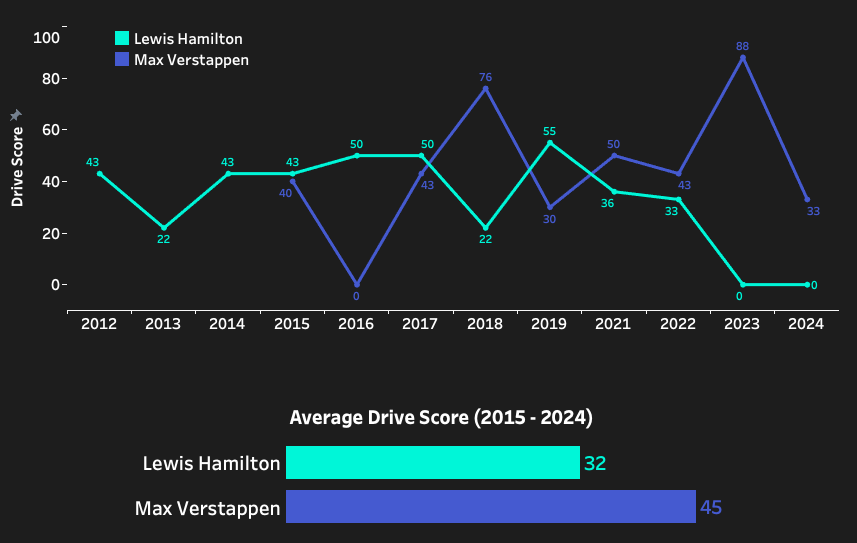
Taken together, the results and Drive Score data have revealed two eras of mastery – one built on legacy, the other on momentum. Hamilton defined what dominance at COTA once looked like, but Verstappen has redefined it for the modern era.
Based on our analysis, the numbers gave Verstappen the edge heading into Austin, positioning him as the driver best equipped to continue his run of strong performances and defend his claim as the 'new' King of COTA.
The Challengers
While Hamilton and Verstappen remained the headline act, the fight in Austin was just as much about the rest of the grid closing in. To understand where every driver stood heading into COTA, we zoomed out from the rivalry and examined Drive Scores across the 2025 season.
The first chart below highlighted each driver’s 2025 Drive Score, a season-long measure of form and momentum entering the United States Grand Prix. Lando Norris and Oscar Piastri led the pack with scores of 35 and 33, while Max Verstappen and George Russell followed closely at 24 a piece. The McLaren duo’s pace and consistency had been defining storylines of the season, suggesting that Verstappen’s main challengers at Austin might come not from Hamilton – but from the 'papaya cars'.
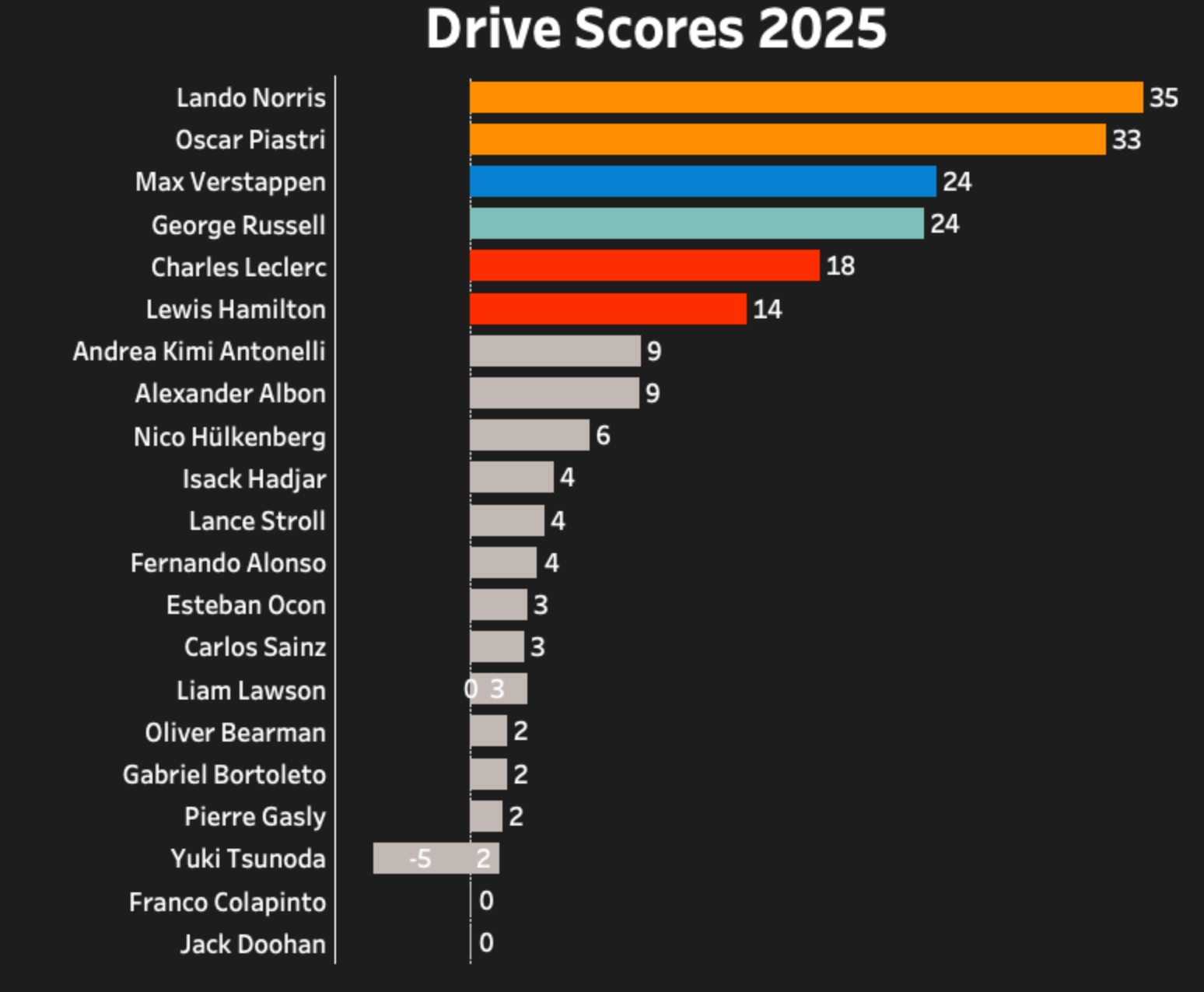
To build our pre-race prediction model, we combined current form with circuit-specific experience. Using a weighted calculation, 80% of each driver’s average 2025 Drive Score was paired with 20% of their average Drive Score at COTA from past races – balancing recent performance with historical familiarity at the track. The result is shown in the Austin GP Prediction chart below.
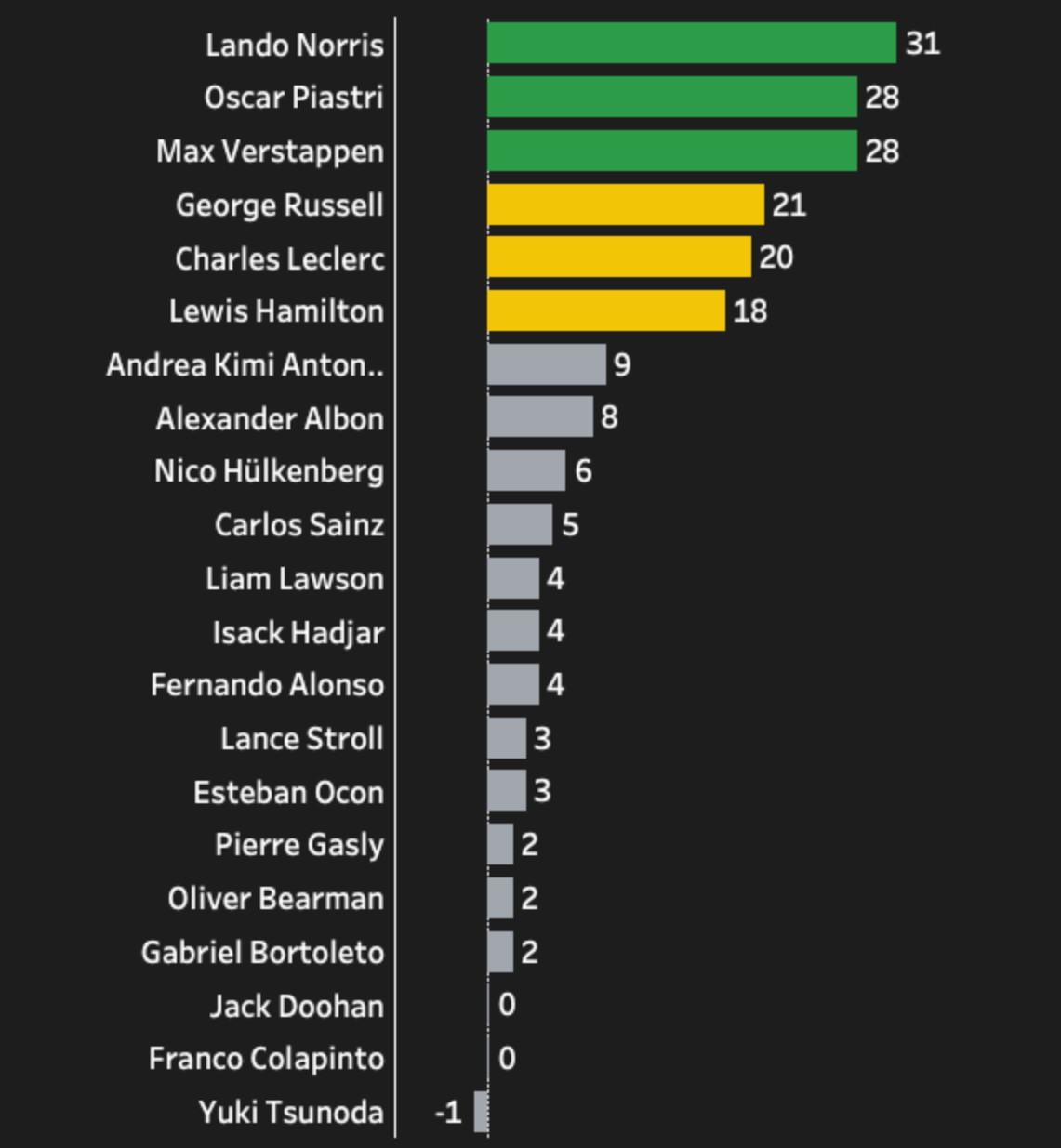
In that projection, Norris narrowly topped the list with a score of 31, while Piastri and Verstappen tied for second with 28. The difference between the top three was slim – a margin small enough that it could swing either way once the lights went out. Considering Verstappen’s record at Austin and the momentum he carried into the weekend from the past few races, our data gave him the edge as the most likely driver to prevail, with Norris and Piastri close contenders for the remaining podium spots.
Further down the order, Russell, Leclerc, and Hamilton were separated by only a few points, positioning them for a tight battle for fourth – a fitting snapshot of how compressed the field had become late in the season.
The Race Recap
Under the bright Texas sun, the United States Grand Prix delivered a thrilling but controlled race that lived up to its billing as one of the most strategic stops on the F1 calendar. The grid lined up almost exactly as we expected with Max Verstappen on pole, Lando Norris beside him in second on the front row, followed by Charles Leclerc, George Russell, Lewis Hamilton, and Oscar Piastri.
When the lights went out, the drama began immediately into Turn 1. Leclerc capitalized on Verstappen’s defensive line and overtook Norris for second, while Piastri and Hamilton managed to get ahead of Russell in the shuffle. By the end of the opening lap, the order among the top six had settled as Verstappen, Leclerc, Norris, Hamilton, Piastri, and Russell. Of those six, all started on medium tyres except Leclerc, who opted for the soft compound – a choice that helped him find grip early and stay close to Verstappen’s rear wing in the opening laps.
An early Virtual Safety Car on lap seven, triggered by a collision between Carlos Sainz (Williams) and Kimi Antonelli (Mercedes), briefly slowed the pace before resuming two laps later. Once back under green, teams began focusing on tyre strategy, with most favoring a medium-to-soft approach for the 56-lap race. Leclerc took the reverse route, running a soft-to-medium setup – a gamble that initially worked in his favour.
By lap 21, Norris’s patience paid off. After shadowing Leclerc for several laps, he finally reclaimed second place with a well-timed move, though it came with a third track-limit warning – putting him one more infraction away from a five-second penalty. Leclerc briefly regained the position following the pit stops, but as the race entered its final stint, Norris’s McLaren once again found its rhythm. Preserving his tyres, managing battery charge, and biding his time, he launched a decisive move on lap 51 to reclaim second place – this time for good.
At the front, Verstappen was in complete control from lights out to the waving of the flag. The Red Bull driver executed a flawless race, maintaining composure and finishing with a final time of 1:34:00.161. Norris crossed the line just under eight seconds behind, while Leclerc followed just over seven seconds adrift of the McLaren. Hamilton, finished with a strong fourth spot in his Ferrari, followed by Piastri's McLaren in fifth and Russell's Mercedes in sixth – matching the same six drivers our model predicted to lead the pack, even if the final order differed slightly.
For Hamilton, fourth place marked an encouraging rebound given his season to date, proving that his form at COTA remains as sharp as ever. But as our data anticipated, the spotlight once again belonged to Max Verstappen. His weekend sweep – winning sprint qualifying, the sprint race, race qualifying, and the Grand Prix itself – secured him a grand slam and further reinforced his grip on Austin. With this latest triumph, Verstappen now holds four COTA victories, just one shy of Hamilton’s all-time record. If there was any lingering doubt about who currently reigns in Texas, this weekend made it clear: Verstappen continues to be the true King of COTA.
Join Data Punk Media today and explore the different data stories we publish.
The State of the Grid
The battle for the Drivers’ Championship continues to tighten as the season edges closer to its conclusion. Our updated visuals highlight the leaders, track the momentum shifts, and show who remains mathematically in contention. With just a handful of races left before Abu Dhabi, every podium and every point is beginning to carry championship-level weight.
After earning 25 points from the Grand Prix win and another 8 from the sprint race, Max Verstappen made one of the largest points gains of the season, tightening the gap to the McLaren duo at the top. Meanwhile, both Lando Norris and Oscar Piastri suffered DNFs in the sprint following a risky overtake attempt by Piastri that ended both of their runs early – a costly moment in an otherwise dominant McLaren season. Even so, Piastri still holds the championship lead with 346 points, with Norris just 14 points behind at 332, and Verstappen closing in rapidly at 306. With multiple races still to come, the title race remains wide open.
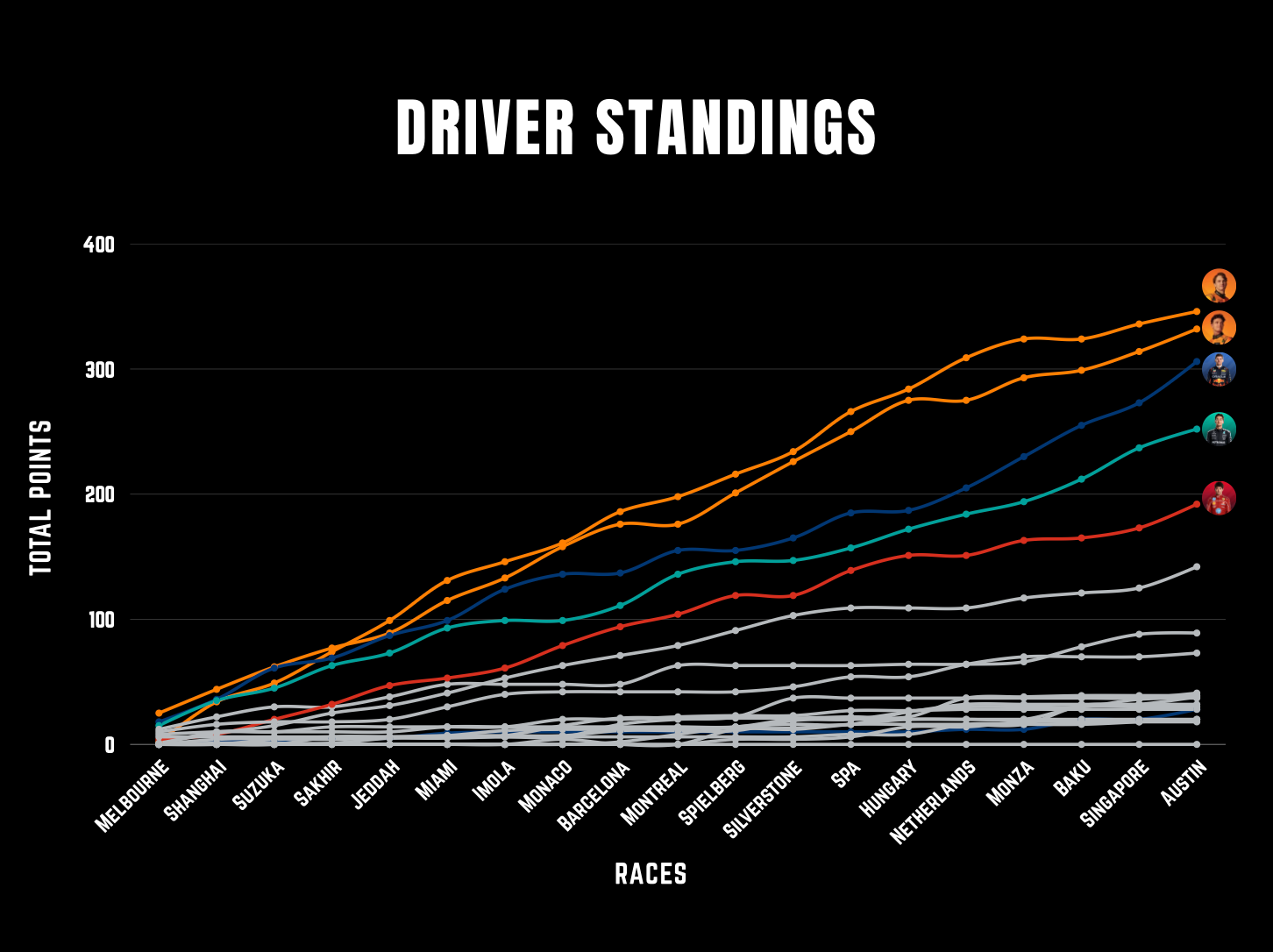
In the Constructors’ Championship, McLaren has already clinched the title mathematically, marking a second consecutive championship-winning season. Behind them, however, the race for second has become one of the tightest battles on the grid. Mercedes currently leads the charge with 341 points, while Ferrari sits close behind at 334, and Red Bull trails just a few points back at 331. With margins this slim, every result in the final rounds could shift the order.
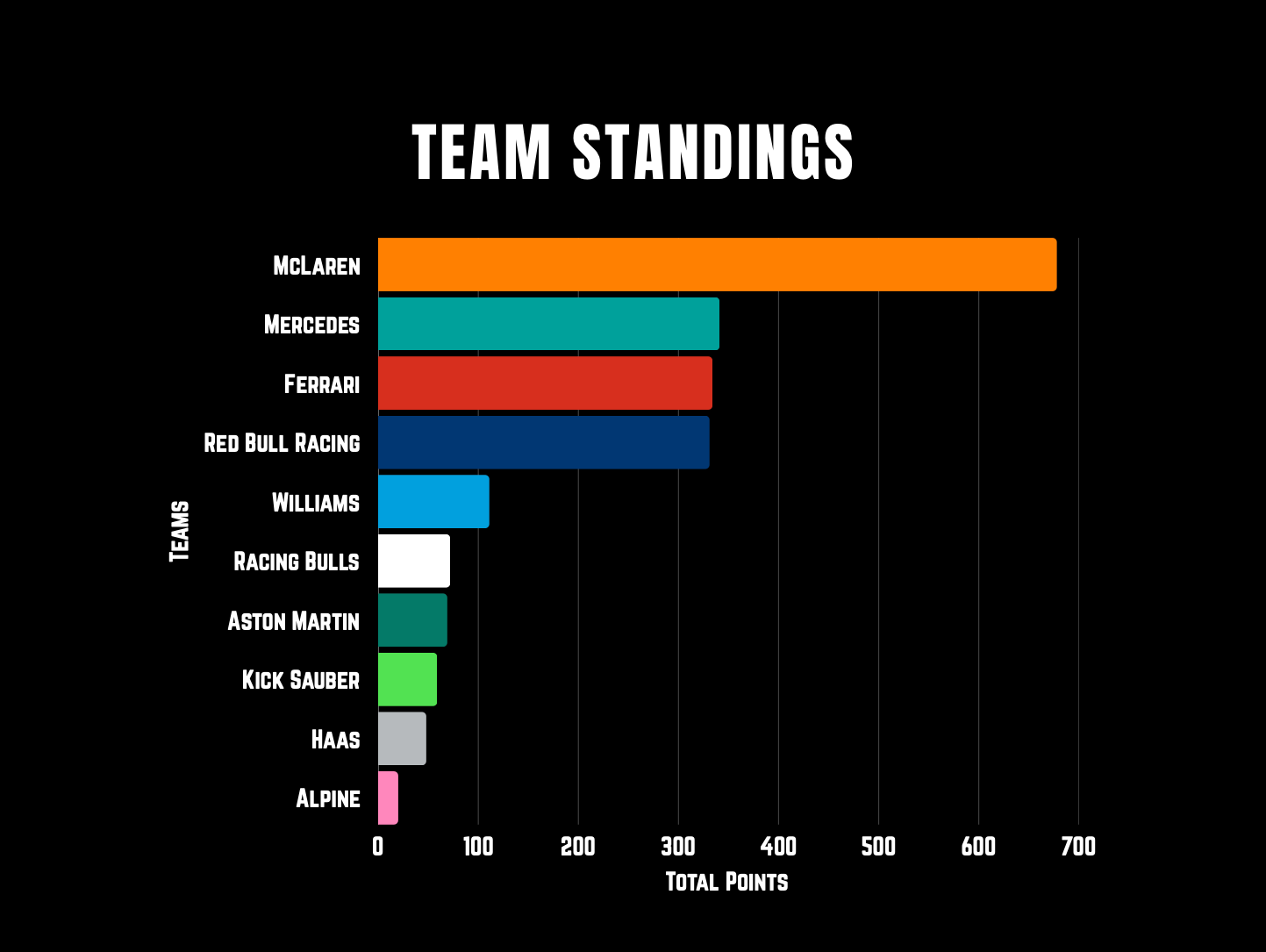
Looking Ahead: Mexico City
Next, we head south to Mexico City, where the story turns toward Red Bull’s stronghold. For years, the Autódromo Hermanos Rodríguez has been Verstappen’s fortress, with dominant wins and unmatched consistency.
But this season feels different. With McLaren rising and Red Bull’s dominance showing cracks, our next story will dive into a data-driven case study of Red Bull’s reign – how it was built, and whether it’s finally beginning to fade.


